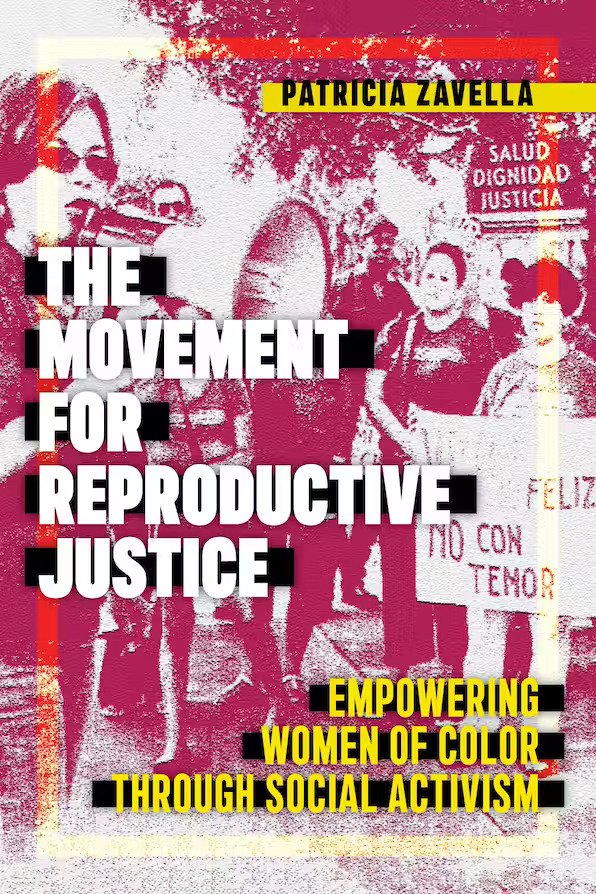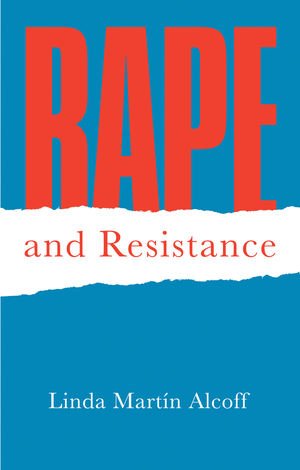Critical Latina Feminist Perspectives on Reproductive Health Post-Roe
We reached out to three feminist pioneers in the fields of philosophy and anthropology who have researched the intersections between reproductive justice and race for generations to reflect on the recent Dobbs decision. Their responses reveal the challenges that lie ahead while inspiring us to take specific action.
In particular, we asked them to reflect on how this decision affects women of color and how women of color have responded to dominant regulations, ideologies, and policies seeking to undermine their choices and livelihoods. They also contextualize the U.S. Supreme Court decision and clarify why reproductive health is a paramount civil rights issue for all who care about justice and freedom.
—
Linda Alcoff, on the need to historicize the push to control womxn’s choices and access to health care…
One of the motives for the recent Dobbs decision is the growing white nationalist movement in the United States, which is concerned about the low white birth rate. Since the Civil War, political leaders have actively encouraged white reproduction, such as Horatio Robinson Storer who led a campaign against abortion and claimed that the future of the nation lay in the “loins” of white women. Later, President Theodore Roosevelt also bemoaned the increased immigration from “undesirables,” which included people of color as well as Jews and southern Europeans, calling this a form of “race suicide.” His warning led to further regulations on immigration passed in 1924 that used national origin as a proxy for race/ethnicity, which slowed down the demographic changes in the U.S. until immigration was opened up in the 1960s.
At a rally for Trump this past year (2022), U.S. Representative Mary Miller made a public statement that the Dobbs decision was a historic “victory for white life.” She later said this was a slip of the tongue. But the fascist government in Hungary that the U.S. right wing so admires also praised the decision, citing the Great Replacement Theory. The only way to stop the decline of the “white race,” on this view, is to increase the reproduction of white Christians through every means possible.
Of course, this makes no sense. Abortion restrictions will undoubtedly increase non-white babies as well, although it will also increase poverty and maternal deaths in communities of color. But conservatives and fascists are fixated on only one empirical fact, that the white populations of the United States and Europe will be minoritized in the coming century. They are treating white women as pawns in their effort to stop the inevitable, and revealing an absolute disregard for the problems of poverty and maternal deaths among women of color.
Pat Zavella: Post-Roe restrictions on abortion affect the most structurally vulnerable people, while WOC activism advocates for policies in which everyone has access to health care.
Women of color often resided in states that refused to expand Medicaid after the passage of the Affordable Care Act, which makes access to any health care services challenging for those with low incomes. After the Supreme Court’s Dobbs decision nullifying Roe v. Wade, fourteen states restricted abortion altogether and courts have blocked enforcement of bans in eight other states as of December 2022. Further, even in states where there are no restrictions on abortion, the influx of people from other states has led to lengthy waiting times for the procedure which often means it happens at later stages in the pregnancy. The cumulative effect of state level legislative anti-abortion activism is that in much of the South, the Southwest (excluding Albuquerque and California), and in the geographic center of the United States stretching from Texas to North Dakota, abortion services are becoming harder if not impossible to obtain.
States that have legislated abortion restrictions are often also locations for low-performing educational systems and under-resourced health systems with weak social safety nets that include poor public transportation systems that disproportionately affect low-income women of color. Because of discrimination and poor economies, women of color in these states are subject to low-wage jobs that do not provide health insurance. The Hyde Amendment, passed in 1976, prevents the use of Medicaid to cover abortions. The 1998 amendment allows the use of Medicaid only for rape survivors and cases of incest or threat of a person’s death if they carry a pregnancy to term. This means that low-income people often have to pay out-of-pocket or rely on donations from abortion funds to cover the cost of abortions, and those costs include taking time off work and paying for childcare and transportation. All of these barriers to receiving health care leave low-income people of color, particularly Black and Latina women, with limited access to contraception and therefore more likely in need of abortion services. Immigrant Latinas and Asian & Pacific Islanders face further barriers related to language in which they do not speak English. All women often enter health care systems that do not provide culturally sensitive services particularly for pregnant people who are trans and/or disabled. Overall, those who get abortions are disproportionately low-income, people of color, and already have at least one child. According to Diamant and Mohamed (2022. 7; also see Kortsmit et al. 2021), African Americans have the highest rate of abortions, over twice that of Latinas, whose rate is over twice that of whites. Clearly, the post-Roe restrictions on abortion affect the most structurally vulnerable people and the complexity of these restrictions along with insensitivities to racial consequences leads to the silencing of the experiences of women of color.
Activists of color have long addressed these structural challenges to full reproductive health service.s They have promoted the federal Women’s Health Protection Act (which as of this writing has not passed) as well as lobbied local legislators calling for removal of restrictive legislation in various states. They have long challenged the narratives that getting an abortion is shameful. Several campaigns have included the stories of influential women about having an abortion and normalizing the notion that sometimes getting an abortion is best for a pregnant person and should be a private decision without state interference. Often these campaigns include testimonies that are posted online and artwork designed to convey women’s strength and independence. In response to the Dobbs decision, women of color joined the widespread protests before and immediately after the recent Supreme Court ruling, expressing outrage and fear about the consequences. A number of reproductive rights organizations issued statements condemning it and calling for attention to the reasons women seek abortions. They have dramatically increased information about local restrictions on abortion services and how to access reproductive health services and support such as child care or travel funds on their websites and through webinars, in-person events, and social media.
Women of color [are] devoted to the reproductive justice movement—whose mission is to support people’s human right to bear children, terminate their pregnancies, raise their children in healthy environments, and bodily autonomy—advocates for policies in which everyone has access to health care services (including contraception and abortion). This movement critiques the discourses of white supremacy, xenophobia, heteronormativity, and classism that favors white heterosexual procreation while vilifying poor, racialized, and queer people whose reproduction is viewed as “out of control” and inappropriate. Activists carry on their history of activism on behalf of all people’s rights to bodily autonomy and access to all forms of healthcare services with dignity.
Iris Lopez: Indeed, WOC reproductive activism is about creating more equitable worlds for all.
As Patricia noted, women of color often reside in states that [have] refused to expand Medicaid after passage of the Affordable Care Act, have legislated abortion restrictions, have low-performing educational systems, and because of discrimination and poor economies, are subject to low-wage jobs without health insurance. All of these conditions leave them, particularly Black and Latina women, without access to contraception and therefore, in need of abortion services.
Women of color in the movement for reproductive justice seek broad reforms to improve everyone’s lives. Their support of women’s human right to bear children, to terminate their pregnancies, and to raise their children in healthy environments are part of broader calls for policies in which everyone has access to health care services including contraception and abortion. They are part of broader critiques against white supremacy, heteronormativity, and classism that favors white heterosexual procreation while vilifying poor, racialized, and queer people whose reproduction is viewed as “out of control” or inappropriate. Activists are organizing resources, information, and discourses that support women’s rights, cultural practices, and resiliency despite historic and ongoing oppression.
—
Below is a list of Reproductive Justice Organizations where you can learn about more about these issues and that you can support:
Black Women for Wellness (http://www.bwwla.org)
California Latinas for Reproductive Justice (http://www.californialatinas.org)
Colorado Organization for Latina Opportunity and Reproductive Rights (http://www.colorlatina.org/content)
Forward Together (http://forwardtogether.org)
Illinois Caucus for Adolescent Health (http://icah.org)
In Our Own Voice: National Black Women’s Reproductive Justice Agenda (http://www.blackrj.org)
National Asian Pacific American Women's Forum (https://napawf.org)
National Latina Institute for Reproductive Health (https://latinainstitute.org)
SisterSong Women of Color Reproductive Justice Collective (http://sistersong.net)
Tewa Women United (http://tewawomenunited.org)
Iris Lopez is a contemporary professor, anthropologist, sociologist, and author, whose work focuses on feminist, Latino, and Latin American studies. She has one full-length book published, an ethnography about sterilization within female Puerto Rican populations, titled Matters of Choice. Currently, López teaches sociology at the City College of New York, part of the City University of New York (CUNY), where she has been the Director of the Latin American and Latino Studies Program since 2016.
Linda Alcoff is a Latin-American philosopher and professor of philosophy at Hunter College, City University of New York. Alcoff specializes in social epistemology, feminist philosophy, philosophy of race, decolonial theory and continental philosophy, especially the work of Michel Foucault. She has authored or edited more than a dozen books, including Visible Identities: Race, Gender, and the Self (2006), The Future of Whiteness (2015), and Rape and Resistance (2018). Her public philosophy writing has been published in The Guardian and The New York Times.
Pat Zavella is Professor Emerita of Latin American and Latino Studies at the University of California, Santa Cruz. Her most recent book is The Movement for Reproductive Justice: Empowering Women of Color through Social Activism (NYU Press, 2020). She serves on the boards of two reproductive justice nonprofit organizations.




